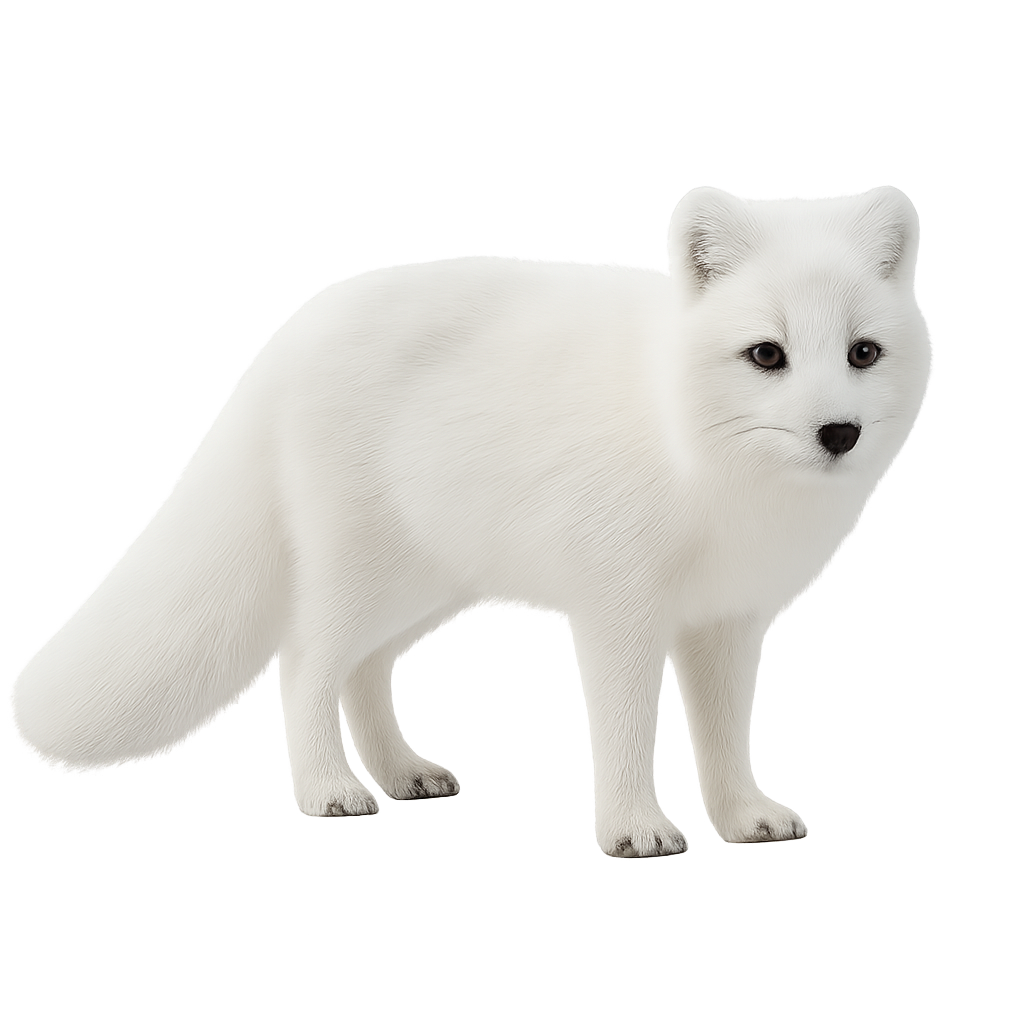Your wildlife photography guide.
Explore the arctic fox in detail, study its behavior, prepare your shots.
Where to observe and photograph the arctic fox in the wild
Learn where and when to spot the arctic fox in the wild, how to identify the species based on distinctive features, and what natural environments it inhabits. The WildlifePhotographer app offers tailored photography tips that reflect the arctic fox’s behavior, helping you capture better wildlife images. Explore the full species profile for key information including description, habitat, active periods, and approach techniques.
Arctic Fox
Scientific name: Vulpes lagopus

IUCN Status: Least Concern
Family: CANIDAE
Group: Mammals
Sensitivity to human approach: Shy
Minimum approach distance: 30 m
Rut period: April to May
Gestation: 49-57 jours
Births: May to July
Habitat:
Arctic tundra, sea ice
Activity period :
Mainly active at night, generally discreet during the day.
Identification and description:
The Arctic Fox is a small carnivore found in the Arctic regions, primarily in Alaska, Canada, Scandinavia, and Russia. It measures about 45 to 50 cm in length, with a tail of 30 to 35 cm, and weighs between 3 and 9 kg, depending on the seasons. Its fur is typically white in winter, allowing it to camouflage in the snow, while it takes on a more brown or grayish hue in summer to blend in with the rocky and grassy landscapes. The Arctic Fox is an opportunistic omnivore, feeding on small mammals, birds, eggs, fruits, and berries. Although well adapted to the extreme living conditions of the Arctic, it is threatened by climate change, which is altering its natural habitat and the availability of its prey.
Recommended lens:
400 mm – adjust based on distance, desired framing (portrait or habitat), and approach conditions.
Photography tips:
Approach slowly and discreetly, using a telephoto lens to avoid disturbing the Arctic fox, which is often vulnerable to human disturbances in its cold and hard-to-reach habitat.
Photograph early in the morning or late in the afternoon, when the light is soft and the fox is more active, often searching for food or moving through the snowy plains.
Capture moments of natural behavior: The Arctic fox primarily hunts lemmings and other small mammals, creating great opportunities for photos of hunting or foraging in the snow.
Be patient and respectful: The Arctic fox is a discreet animal and may spend a lot of time moving or resting. Wait for moments when it is more visible and engaged in natural activities.
The Arctic Fox is a vulnerable species, due to climate change and the loss of its natural habitat. It is essential to respect its fragile Arctic environment and minimize disturbances. Follow local conservation rules to help preserve this iconic Arctic species.
The WildlifePhotographer App is coming soon!
Be the first to explore the best nature spots, track rutting seasons, log your observations, and observe more wildlife.
Already 1 432 wildlife lovers subscribed worldwide

